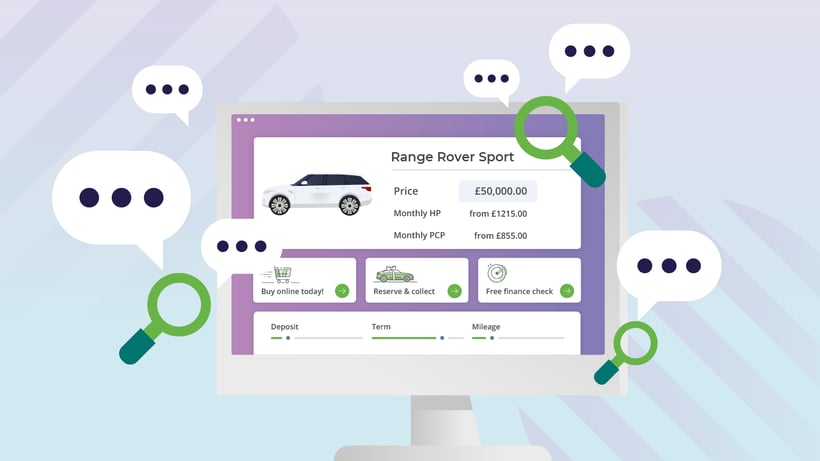Have you ever considered how your cars are showcased online, and how they could reflect your business to your customers?
In our Better Buying Journeys white paper, we highlighted the importance of strong images and video when it comes to showcasing products online, but is that all it takes to win the trust of customers?
In this post, we’ll look at tips you can follow to help build that extra trust online, so customers are ready to buy the second they land in the showroom.
Why trust is critical when selling a vehicle online
The online experience has truly transformed the vehicle buying journey.
Thanks to the internet, your customers have access to almost all the information they could ask for at their fingertips, which can often mean questions they'd typically save for the showroom, are answered online.
Research from eBay Motors group shows that people spend on average 40.5 days researching their next vehicle - this data is from 2019, in a pre-pandemic economy, the number of days is likely to have grown post-pandemic when online shopping is second nature to almost every consumer.
During those 40+ days, potential customers are watching video reviews, engaging and reading forum posts, and even responding to social media comments - some will spend so much time researching, they know almost as much as a qualified salesperson.
So, in an age when customers have access to more options than ever before, it's become essential to gain their trust as early as possible, and we do that by being transparent.
Are you as transparent online as you are on the forecourt?
One of the great things about showcasing stock online is that you have complete control over how each vehicle is presented.
When taking photos, you can choose the ones that show off the vehicle looking its absolute best.
Many consumers will be browsing on smaller screens, mobile or tablet devices, where the images may not be as crisp as they could be on an HD desktop monitor, so having good photos counts.
On the forecourt, however, your customers can get up close to the vehicles they’re interested in, and they might notice some imperfections they missed online.
Things like scratches, bumps, dents and imperfections are much easier to see when getting a closer look at the vehicle they’ve picked out.
If the customer has spent a significant amount of those 40.5 days looking at pictures of a certain vehicle online, only to spot the odd fault when they come to see it in person, they’re very likely to be put off their purchase.
Consumers expect some signs of wear and tear on a used vehicle, being transparent lets you highlight all the value you offer, can help you take advantage of distance selling by appealing to customers from further afield, and smooth the sales process later.
How to list the imperfections
It’s important to build trust in the earliest stages of the customer’s research journey, and it all starts with your images.
So what can you do to showcase the imperfections in a product, in a way that builds trust with the customer?
Talk about the minor defects
Don’t sweat the small stuff, be honest about minor imperfections. People expect some degree of usage signs when it comes to a used vehicle, and most consumers would rather be told about a small scuff on the rear bumper than find it after they’ve come to collect the vehicle after reserving it online.
Take images of the ones that matter
If there are imperfections that might impact the customers' enjoyment of the vehicle once they’ve bought it, don’t just tell them, show them. By showing the small imperfections early, the customer can see you’re honest, and in turn, will be less likely to want to go through a lengthy renegotiation process further down the sales journey.
Video is your friend
Video gives you two advantages over images alone. It gives the customer a chance to see the vehicle in less-flattering angles as the camera moves around and secondly, it allows you to showcase some personality, and have a member of your team describe the vehicle as they would if the customer was there in-person - there's a tangible value to the personal touch, that goes a long way in bridging the gap for online-first customers.
Next steps...
There’s nothing wrong with trying something new, get out there and experiment with how you're showing off the vehicles in your stock.
Understanding the starting points of the modern consumer's vehicle-buying journey is the first step in improving your entire sales process.
You can learn more about creating new customer experiences in our latest white paper, Better Buying Journeys, get your copy today and start transforming your buying experiences.
